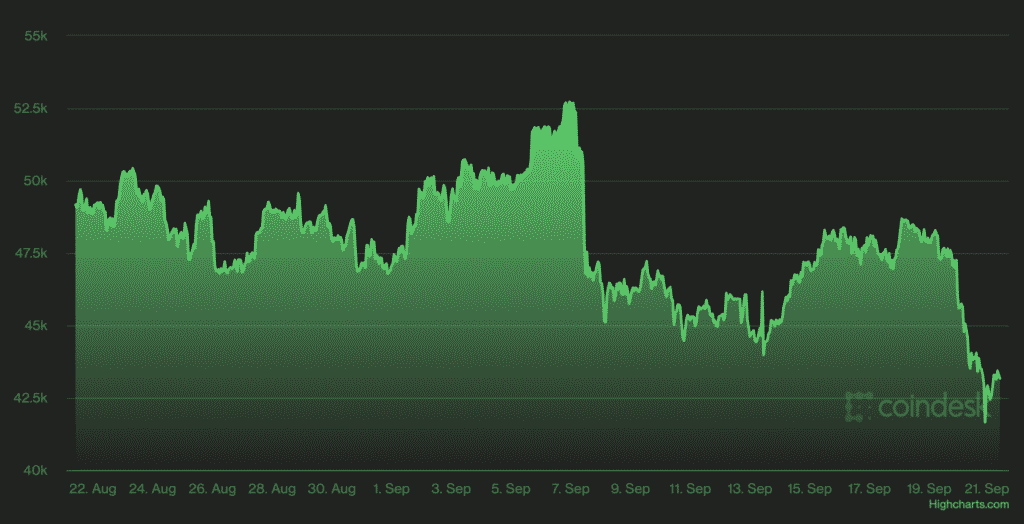You need new jeans. You go to Old Navy (yes I’m projecting here…I go to Old Navy) and find the right fit and style. The jeans are $30.
Do you buy them?
Let’s add another detail. The jeans were only $20 last week. Their price increased just yesterday to $30. Ugh. How do you feel about buying the jeans now?
What if the jeans were $40 last week and just got marked on sale for $30. Do you buy them?
Three scenarios—$30 forever, just marked up to $30, just marked down to $30. The jeans are identical across these three scenarios. No difference in the denim. The price you pay is identical, too. $30 in each case.

Yet our feelings about the jeans—a good buy? a bad buy?— are affected by the knowledge of their recent prices. What gives? Why does this happen?
Cognitive biases are at play here. A cognitive bias is a mistake in reasoning that can occur when we hold onto beliefs and predispositions regardless of new information being made available to us.
Specifically, anchoring bias is the likely culprit.
What is anchoring? In these scenarios, the knowledge of the jeans’ recent prices can change our perceived present value of the jeans, despite the fact that the jeans are identical in each scenario. We are being anchored to last week’s prices, which affects our opinion of this week’s price.
- If the jeans were just marked up from $20 to $30, part of our brain feels like they’re only worth $20. Why? Because the jeans haven’t physically changed since they were selling for $20. Why should we pay $30 for these jeans? Feels bad, man.
- Similarly, if the jeans are on sale from $40 to $30, part of our brain thinks we’re getting a steal! We’re getting more than our money’s worth. Every department store (remember those?!) in history used this bias on its customers—“Women’s jackets up to 70% off!!!”
We become anchored to the recent prices ($20 or $40), which affects how we feel about the new price ($30).
This is exactly why Ben Graham created his famous parable of “Mr. Market.”
From Jeans to Bitcoin to Stocks
Yes, you need to re-think those “great deals” and salesmen’s tactics and 2-for-1 specials. You’re being manipulated into irrational happiness when spending your hard-earned cash.
But I really want you to think about investing: stocks, bonds, and even cryptocurrency.
The inspiration for this article came on September 7th, 2021, when Bitcoin’s price dropped from $53K down to $43K in 12 hours, before bouncing back to ~$47K before the end of the day.

Many social media investors reacted, imploring their followers to, “Buy the dip!”
Bitcoin’s quick drop in price influenced them just like on-sale blue jeans. “If yesterday was $53K and today is $45K, then we must be having a sale!” And when there’s a sale, an irrational part of our monkey brain compels us to buy.
But were these investors equally excited about the $45K price point on the way up? That is, were they suggesting that people buy Bitcoin after it jumped from $30K to $45K in early August 2021? Was there an equal “buy the spike!” sentiment?
No there wasn’t. #BuyTheSpike has never trended (I checked…)
And yet we know that Bitcoin is intrinsically unchanged between August 2021 and September 2021. Just as our blue jeans were identical across the three hypothetical scenarios, Bitcoin at $45K is the same whether coming up from $30K or dropping down from $53K.
Last week’s price should be irrelevant to today’s deal. But if we anchor ourselves to recent prices, we will make illogical decisions. We’ll cloud our investing choices with irrelevant information, and that information will toy with our emotions—which is bad news for long-term investing success.
Stocks work similarly. A drop in price is not a sign that you ought to buy. An increase in price is not a sign that you should sell. Timing the market based on previous prices is a loser’s game.
In fact, for both Bitcoin and traditional stocks, analysis shows that “buying the dip” is a poor long-term tactic.
The Analogy Has Limits
Today’s analogy has limits. Jeans are not Bitcoin (big news, I know).
Jeans are a commodity. Their value is based purely on their utility to the consumer. We purchase them to wear them (and eventually wear holes in them), without the intention of re-selling them later (let alone at a profit).
Stocks and Bitcoin are assets. Stocks derive their value from their underlying businesses’ long-term profit prospects. Bitcoin derives its value from market demand. Investors buy these assets with the intention of making a profit.
A consumer’s need for blue jeans does not change on a daily basis. If you needed blue jeans last week, you still need them this week. If $30 for a pair made sense last week, it makes sense this week.
Investment assets can work quite differently. Stocks or Bitcoin can see legitimate changes in intrinsic value over short time periods.
Nikola—an electric truck company—saw its stock drop from $66 in June 2020 to $29 in July 2020 to $10 today. Is this a sale?! Should you grab some Nikola stock before it invariably rises back to $66?!

It’s up to you, but Nikola’s stock price dropped due to allegations of fraud. Their marketing videos featured one of their truck prototypes weaving its way down a private road. Wow—amazing technology! Only after a whistleblower’s accusations did Nikola admit that the truck was not being electrically powered but instead was being pulled downhill by gravity.
Oops.
The market believed Nikola’s stock was worth $66 before this fraud, when investors believe that video showed a legitimate electrically-powered truck. But investors quickly lowered their expectations when the truck was shown to be more like Newton’s apple than Musk’s Tesla.
As far as I know, blue jean fraud does not exist. The quality of denim isn’t changing week to week. Yet the quality of a company could change based on newly available information. Similarly, the long-term value of Bitcoin could change based on real-world events affecting the crypto market’s valuations.
Know the Value, Know Your Price
Ultimately, today’s lesson is to know the value and know your price. If $30 is a fair price for jeans, then it’s fair regardless of last week’s price.
Anchoring oneself to previous prices is likely to distort your understanding of your own value. Don’t do it!

When you do change your perceived value of an asset or product, make sure your reasons are justified. “The price recently changed, so my value changes…” is not a good justification.
Don’t anchor yourself. Stay logical, my friends!
Thank you for reading! If you enjoyed this article, join 8000+ subscribers who read my 2-minute weekly email, where I send you links to the smartest financial content I find online every week.
-Jesse
Want to learn more about The Best Interest’s back story? Read here.
Looking for a great personal finance book, podcast, or other recommendation? Check out my favorites.
Was this post worth sharing? Click the buttons below to share!